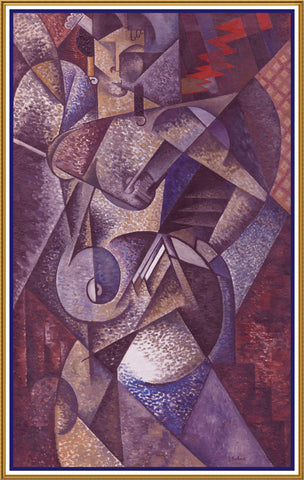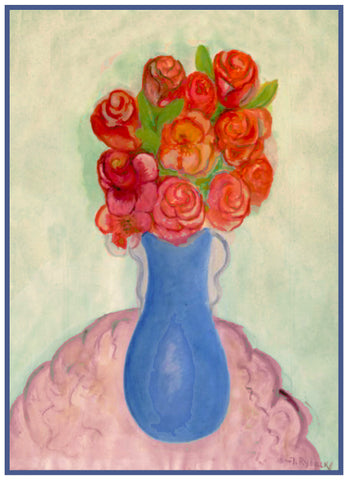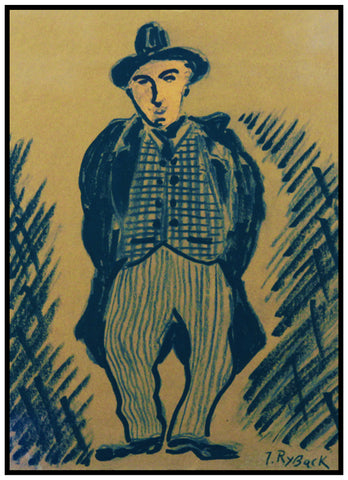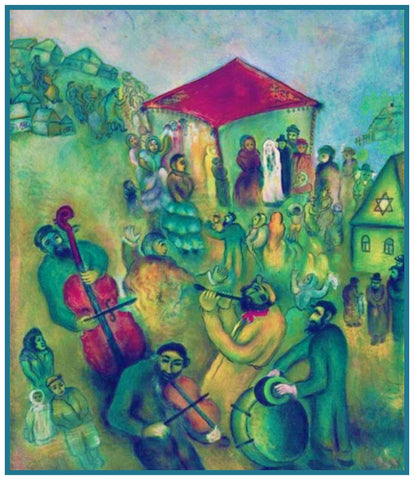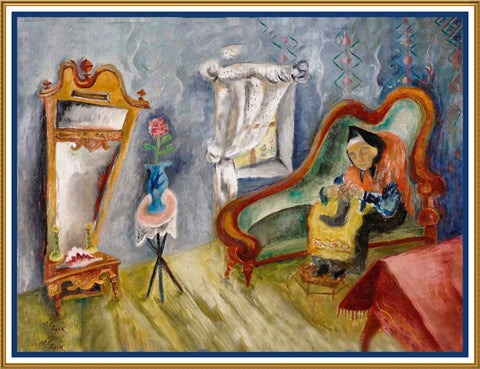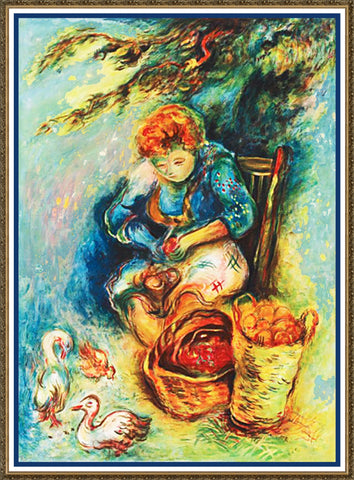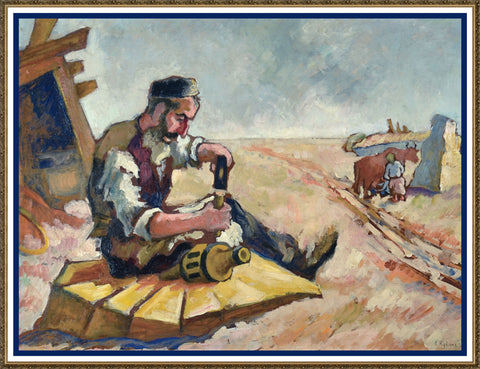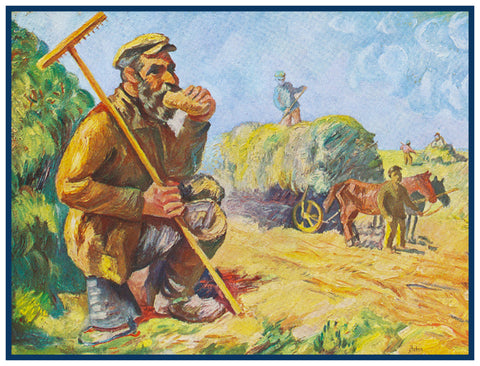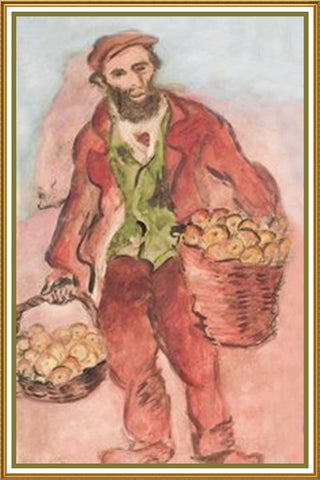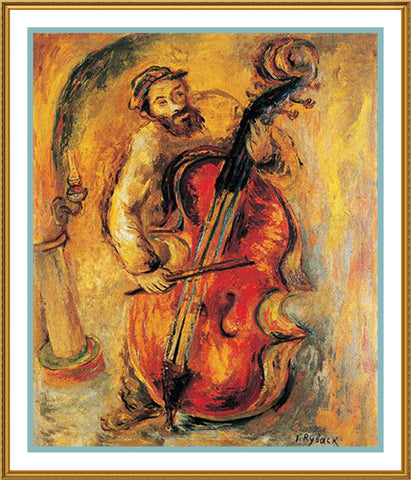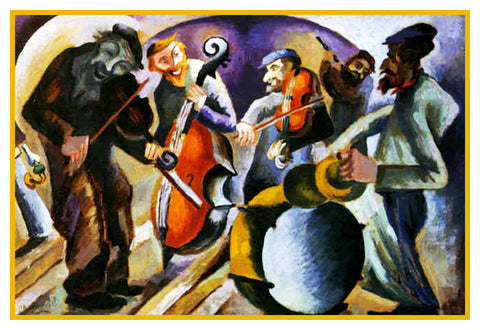Folk Art Issachar Ber Ryback Deluxe Treasury #1 -Three Counted Cross Stitch Patterns Charts
BONUS: 3 charts for the price of 2!
We are pleased to offer: THREE Orenco Originals Counted Cross Stitch Charts, Patterns, Graphs
- Pattern #1: Folk Art Giraffe. Uses 2 DMC Colors only! The Finished size of each chart when stitched will be: 12 inches (168 stitches) by 16 inches (224 Stitches).
- Pattern #2: Folk Art Lion. Uses 2 DMC Colors only! The Finished size of each chart when stitched will be: 16 inches (224 Stitches) by 12 inches (168 stitches).
- Pattern #3: Folk Art Antelope. Uses 2 DMC Colors only! The Finished size of each chart when stitched will be: 16 inches (224 Stitches) by 12 inches (168 stitches).
What You Receive:
You will receive 3 complete patterns.
Each pattern consists of:
- Each pattern has 2 versions of each chart both printed in black ink on bright white 11" by 17" paper. Both Charts are for 14 count fabric.
- Chart Version #1 is a single page chart. Chart Version #2 (tired eyes) is a 4-page enlarged chart that eases eye strain.
- A color illustration.
- Counted cross stitch instructions.
- List of DMC Floss colors needed to finish the project
*** This is not a Kit. No fabric or floss are included in this Purchase***
This is product is for patterns that are used to sew and to create a cross stitch picture. This is NOT a completed product. It is NOT a kit, it contains no floss or fabric.
What Inspired These Patterns:
BONUS: 3 charts for the price of 2! This is a cross-stitch pattern, not a completed product. It is not a kit, and contains no floss or fabric. This Chart, Graph, Pattern was based upon the work of Russian Artist Issachar ber Ryback (1897-1935), Born in Yelizavetgrad Russia in 1897. He attended the Art Academy in Kiev from 1911-1916 and was an important contributor to the Kiev art scene until 1921 when he moved to Berlin where he participated in the historically important Berlin Secession exhibition. He initially experimented with Cubism and then began painting Jewish subject matter in the 1920s when critics and collectors began to appreciate his analytic Cubism and recognize his importance in the Russian vanguard movement. He was invited back to Moscow in 1925 to design costumes for the Moscow Theatre, before moving to Paris in 1926. In Paris he adopted a new style of Realism, portraying Russian Jewish €œshtetl€ life, bringing out the forceful, distinctive character of his Yiddish-speaking subjects without resorting to sentimentalism. Much of his collection was donated for the establishment of the Ryback Museum of Bat Yam in Israel. Ryback was an member of the Russian Jewish, modernist movement that included Lissitsky, Altman, Aronson and Chagall, all of whom were seeking to revitalize Jewish art during a period which saw the cultural efflorescence of Yiddish literature, music, theater, and art.


![[product_title] - Orenco Originals LLC Counted Cross Stitch](http://www.orencooriginals.net/cdn/shop/products/amazonpictureissacharberrybacki1_1024x1024.jpg?v=1737158125)
![[product_title] - Orenco Originals LLC Counted Cross Stitch](http://www.orencooriginals.net/cdn/shop/products/amazonpictureissacharberrybacki1_medium.jpg?v=1737158125)
![[product_title] - Orenco Originals LLC Counted Cross Stitch](http://www.orencooriginals.net/cdn/shop/products/362684515774-1_f00ddda4-1864-43c3-a3e3-99098a918ce5_medium.jpg?v=1737158125)
![[product_title] - Orenco Originals LLC Counted Cross Stitch](http://www.orencooriginals.net/cdn/shop/products/362684515774-2_7d3f69f5-b5c1-4720-ae4e-baf89027e6f0_medium.jpg?v=1737158125)
![[product_title] - Orenco Originals LLC Counted Cross Stitch](http://www.orencooriginals.net/cdn/shop/products/362684515774-3_abf520db-4d87-40f8-8923-846b7e94c63b_medium.jpg?v=1737158125)
